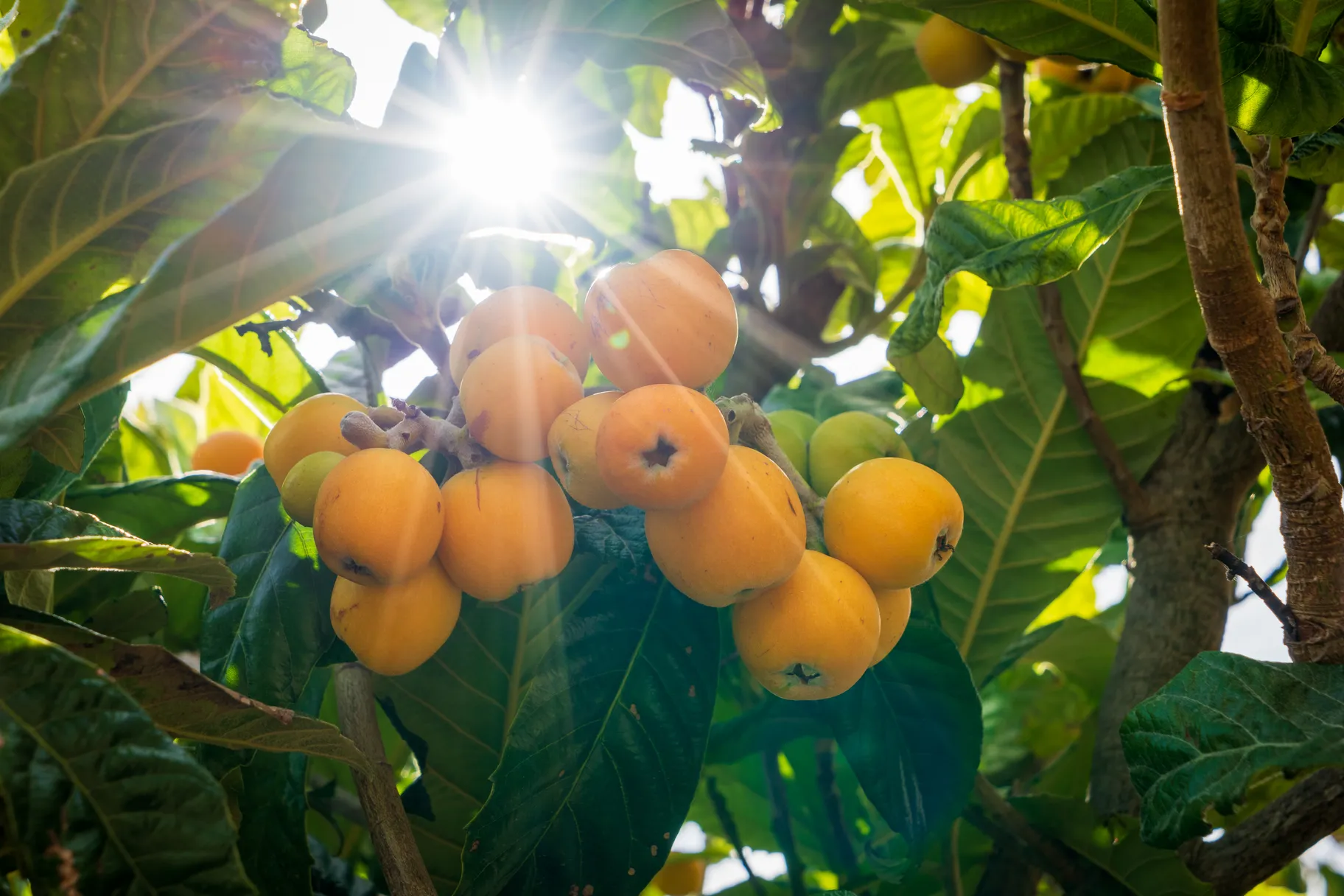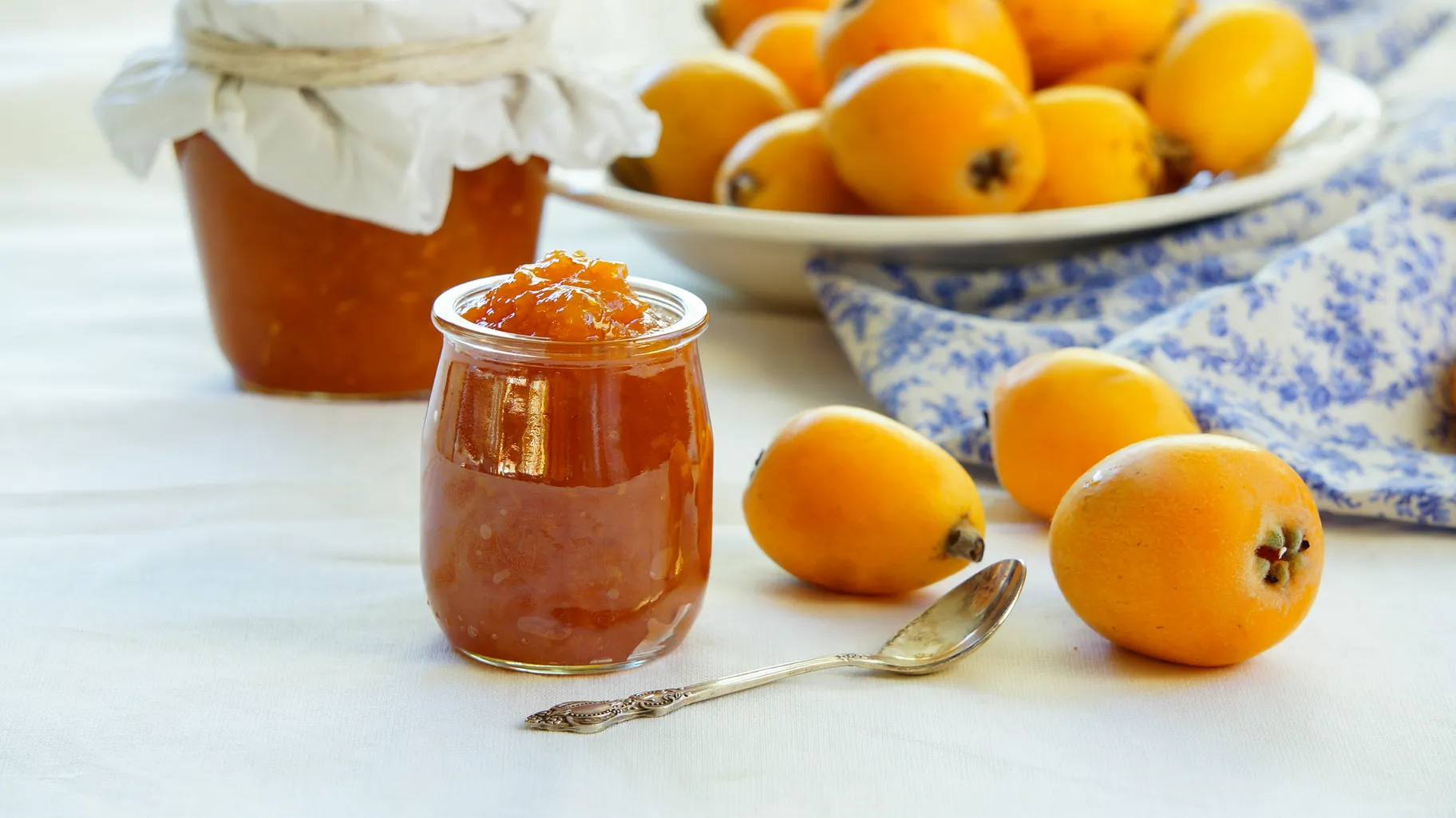As you drive through Southern California this time of year, loquat trees make their presence known. It’s easy to overlook the trees and even their blooms. But you can’t mistake those egg-shaped, apricot-colored fruits sitting amidst the dark green leaves. Once you start to notice them, they seem to be everywhere in neighborhoods where people plant fruit trees in the front and back yards.
As an Angelena, I grew up eating them with friends as valued plunder we crossed property lines to acquire. I particularly loved the trees we found abandoned in empty lots. (There were many more empty lots in LA decades ago). They are the perfect fruit to eat fresh off a tree. I don’t bother to peel them. I split them in half, remove the lovely bead-like seeds, peel off the inner membrane and enjoy the juicy, sweet, slightly acidic flavor. They aren’t sold in supermarkets because they’re too delicate to be jostled in shipping without being bruised. However you can find them in many farmers markets. But really, your best bet is to start talking to everyone about how you want to find some, and pretty soon you’ll be led to the trees.

These loquats are ripe for picking in the sunshine. Photo courtesy of Shutterstock.
Given that loquat trees thrive in subtropical and mild temperate climates, it should come as no surprise that they found their way from their home in Southern China to Southern California. They’re drought-tolerant and can survive a fair amount of heat and chill. They are easy to propagate from seed, and there are specialty nurseries here that sell them if you’d like one of your own. That way you don’t have to knock on doors to ask if you can pick them or look for them on public byways to help yourself. Although both of these methods of acquisition are adventures. In fact, you can take a drive to California Tropical Fruit Nursery in Vista and purchase a tree to plant. While you’re there, you can buy the fruit fresh off their mature trees. Plan to share with neighbors or jam them, however, since there’s a five pound minimum. You can also get trees at Parkview Nursery in Riverside.

Loquat jam is easy to make with the prolific fruit. Photo by Shutterstock.
I asked listeners what they do with the fruit. The overwhelming answer was eat it fresh. But quite a few folks make jam or syrups. Others go beyond the obvious to make loquat pico de gallo, loquat chutney, or using the fruit in tarts or shortcake. One woman’s mom makes it into an agua, the Mexican cold fruit refresher, which I think is a genius idea. Basically, use loquats as you would any other soft sweet fruit. LA Times journalist and KCRW contributor Gustavo Arellano wrote a wonderful article about loquats a few years ago and he linked to two recipes from the paper’s archives. One is for loquat salsa, the other for tajine of cornish game hen with loquats by one of my favorite cookbook authors Kitty Morse. To give you an aspirational look at the variety of dishes you can make, here's a gorgeous video from China. My favorite dish she makes is loquat sweet and sour pork. Another great idea is to make the Italian liquor nespolino from the seeds. It’s very similar to amaretto.
